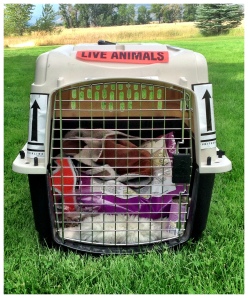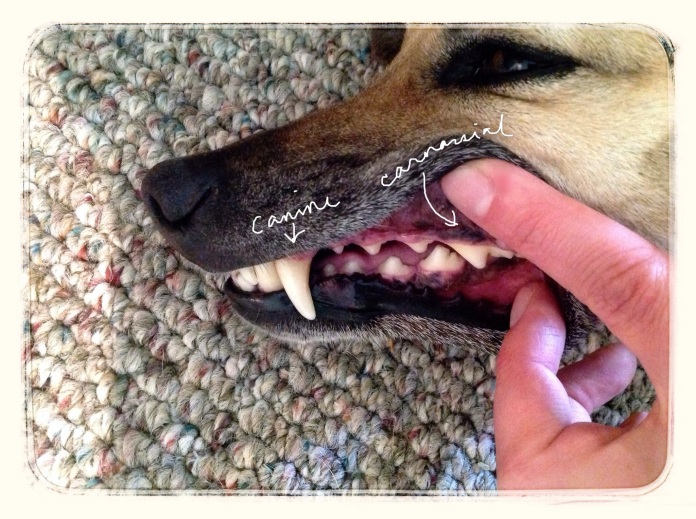Cao has been stress shedding profusely since she saw the first cardboard box come out. This is probably the most organized move I’ve ever done, and while it means that I’ll show up for vet school knowing exactly where my Veterinary Virology book, Carhartt bibs, and shampoo are, it also means that the stress of packing has just been spread out over a longer period for both me, and Cao.
Here are some ideas on how to minimize the stress of a move on your and your pets:
1) Start acclimating your pet to kennel travel.
Not everyone wants their pet to be kenneled while driving, but it add another arrow to your quiver of skills, both for moving, and in the case of an emergency. Begin the process well before your move by procuring an adequately-sized, hard sided kennel. The ASPCA has a great resource for how to crate train your dog over a weekend. Then, move the crate to the vehicle, and practice crating while on the move (but never leave your pet in a hot car). If you’ve got a kitty, it’s a good idea to harness train them as well.
2) Bring some easily accessible familiar items.
Your pet should have a designated space during the move – a bed, blanket, kennel, etc. Work with your pet to establish it as “their place” at home. A favorite toy can provide some security as well.
3) Now’s not the time to change foods.
Make sure you have enough of your pet’s current food to last for a week or two after arrival – or check with local pet supply stores to make sure it will be available there.
4) Enrich!
The day before the move, block out some time for you and your pet to get some exercise. A llllooooonnnngggg walk for you and your dog, or some laser/feather flinger time for your kitty. It’ll provide some normalcy, tucker them out a little and help them (and you!) relax. I’ve also increased Cao’s bone time. The day of the move, make sure their morning activities are as uninterrupted as possible.
5) Paperwork.
Request veterinary records for your animals from all vets you’ve seen. To cross interstate borders, your animal should have proof of current rabies vaccination. In case of emergency boarding, I recommend that dogs are currently vaccinated for Bordetella and canine distemper, and cats should be vaccinated for Feline Immunodeficiency Virus (FIV) and feline distemper. Keep the phone number of your current vet handy, and research veterinary options in your new hometown – it’s a good idea to establish a relationship with a vet before a crisis occurs.
6) Pet-proof your travel plans.
Make sure you’ve budgeted time for walks, confirmed that pets are welcome at any hotels along the way, and brought along a cat litter box, if necessary (Xerox box tops work great as a portable, disposable solution.)
7) On sedation…
I think that most travel anxiety can be eliminated with a combination of careful acclimation and exercise, but if you and your vet decide that sedation is required, make sure that you do a test run with the drug at home before the move. You do not want to discover that your pet reacts poorly 150 miles from the nearest vet, or in the middle of the night at a hotel.
Now, to continue packing, while Cao sighs heavy-heartedly. T minus 44 hours! Got some additional advice for moving with pets, or other good resources? Leave it in the comments!



